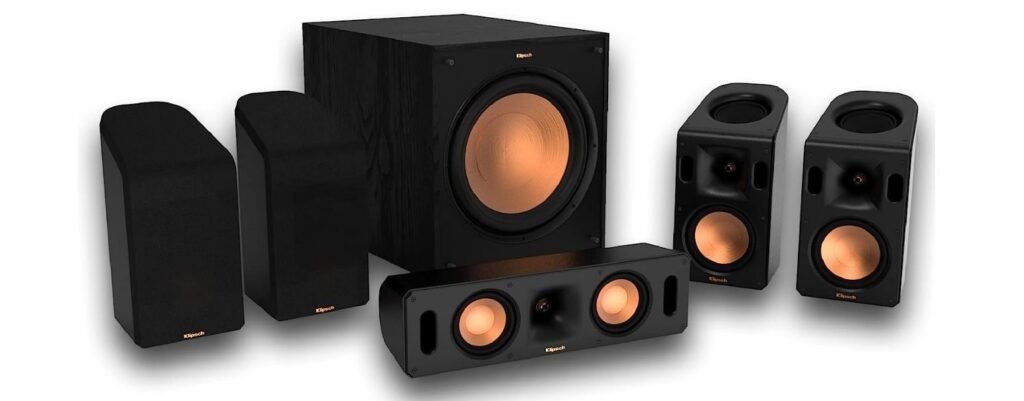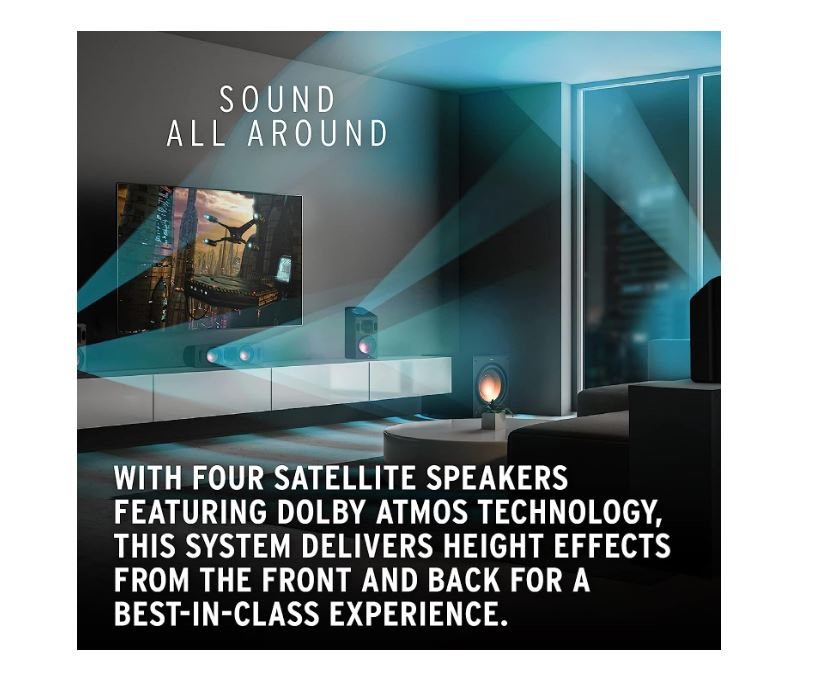14 Best DIY Home Theater Speakers: Building High-Quality Sound Systems at Home.

- Table of Contents
- Introduction: The World of DIY Home Theater Speakers
- 1. Choosing the Right Speaker Components
- 2. Acquiring the Necessary Tools and Materials
- 3. Building the Speaker Cabinets
- 4. Wiring and Assembling the Speakers Buy Now
- 5. Customizing the Aesthetics
- 6. Sound Quality Calibration
- 7. Placement and Acoustics
- 8. Connecting to Your Home Theater System
- 9. Troubleshooting Common Issues
- 10. Tips for Optimal Performance
- 11. Cost Considerations: DIY vs. Pre-built Speakers
- 12. Safety Precautions for DIY Enthusiasts
- 13. Maintenance and Upkeep
- 14. Conclusion: The Satisfaction of DIY Home Theater Speakers
- FAQs
Table of Contents
- Introduction: The World of DIY Home Theater Speakers
- 1. Choosing the Right Speaker Components
- 2. Acquiring the Necessary Tools and Materials
- 3. Building the Speaker Cabinets
- 4. Wiring and Assembling the Speakers Buy Now
- 5. Customizing the Aesthetics
- 6. Sound Quality Calibration
- 7. Placement and Acoustics
- 8. Connecting to Your Home Theater System
- 9. Troubleshooting Common Issues
- 10. Tips for Optimal Performance
- 11. Cost Considerations: DIY vs. Pre-built Speakers
- 12. Safety Precautions for DIY Enthusiasts
- 13. Maintenance and Upkeep
- 14. Conclusion: The Satisfaction of DIY Home Theater Speakers
- FAQs
Introduction: The World of DIY Home Theater Speakers
In the ever-evolving realm of home entertainment, there’s a growing trend for DIY Home Theater Speakers enthusiasts to craft their own home theater speakers. Not only is it a fun and rewarding project, but it can also lead to a high-quality audio experience that matches, or even surpasses, commercially available options. In this article, we’ll take you through the exciting journey of creating your own DIY Home Theater Speakers.
Fellow home entertainment enthusiast! Are you ready to dive into the exciting world of DIY Home Theater Speakers? Well, you’re in for a treat. Imagine having your own custom-built speakers that not only look great but also deliver sound that’s perfectly tailored to your liking. In this article, we’ll take you on a journey through the art of creating your very own DIY Home Theater Speakers.
DIY speaker crafting is not just a fun and rewarding project; it’s a chance to experience audio quality that can rival or even outdo what you’d get with store-bought options. So, grab your tools, roll up your sleeves, and let’s get started on this sonic adventure.
1. Choosing the Right Speaker Components
Before you embark on your DIY Home Theater Speakers-building journey, it’s crucial to select the right components. These include the speaker drivers, crossovers, and enclosures. The selection process depends on your specific needs, such as the size of your room, your budget, and your sound preferences. Quality components are essential for top-notch sound.
Now that you’re all fired up to embark on your DIY Home Theater Speakers-building adventure, let’s begin with a critical step: choosing the right components. It’s like picking the ingredients for your favorite recipe – each element plays a significant role in the final flavor, or in this case, sound.
First, you’ll need to consider speaker drivers, crossovers, and enclosures. The choice you make depends on several factors. Do you have a dedicated DIY Home Theater Speakers room, or is this setup for your living room? What’s your budget? What kind of sound do you prefer – crisp and clear or deep and booming? These are just some of the questions to ponder as you assemble your dream speaker team.
Remember, the quality of these components can make or break your DIY speakers. So, do your research and choose wisely. It’s like hand-picking the freshest produce for a gourmet meal – the better your ingredients, the more delightful the outcome.

2. Acquiring the Necessary Tools and Materials
Equipping yourself with the right tools and materials is the foundation of a successful DIY project. You’ll need items like a saw, screwdrivers, soldering equipment, and various woodworking materials. Be sure to have everything ready before diving into the construction phase.
Alright, now that you’ve got your speaker components all lined up, it’s time to gather the necessary tools and materials. Think of this as getting your toolbox and ingredients ready for that gourmet meal you’re about to cook – without the right equipment, it’s going to be a bit challenging.
So, what’s on your DIY Home Theater Speakers-making shopping list? First off, you’ll need some basic tools: a saw, screwdrivers, a soldering iron, and some clamps. These are your trusty kitchen knives, essential for the job.
Then, there are the woodworking materials – the equivalent of your flour, sugar, and spices. Depending on your design, you might need plywood, MDF (medium-density fiberboard), or other wood types. These materials will form the cabinets that house your speaker components.
Before you dive into the build phase, make sure you’ve got everything you need. It’s all about being well-prepared so that your DIY Home Theater Speakers journey goes as smoothly as possible. Now, let’s roll up our sleeves and get ready to shape your sonic masterpiece! Buy Now
3. Building the Speaker Cabinets
The speaker cabinets play a pivotal role in sound quality. They house the speaker components and determine the overall aesthetics. Crafting cabinets with precision is key to achieving optimal sound resonance and a professional look. It’s a task that requires careful measurements and woodworking skills.
Welcome to the heart of your DIY speaker project – building the speaker cabinets. Think of this as the moment when your ingredients come together to create a mouthwatering dish. In this case, we’re cooking up some sweet sounds!
Crafting speaker cabinets requires precision and attention to detail. Just like a master chef measures ingredients with care, you’ll be taking precise measurements and cutting wood pieces to create the perfect enclosure for your speaker components.
The quality of your cabinets is essential, not just for aesthetics but also for sound resonance. A well-constructed cabinet can greatly enhance the overall sound quality of your DIY speakers.
So, put on your woodworking hat, get out those tools, and let’s create some gorgeous cabinets that will not only make your speakers sing but also look fantastic in your home theater setup. It’s all about the perfect recipe – a dash of craftsmanship, a pinch of creativity, and a whole lot of passion.

4. Wiring and Assembling the Speakers Buy Now
Assembling the speakers involves connecting the driver units and crossovers within the cabinets. Proper wiring is vital to ensure that all components work harmoniously. This step demands attention to detail and patience.
Now that you’ve masterfully crafted your speaker cabinets, it’s time to bring your DIY home theater speakers to life by wiring and assembling them. Think of this phase as the moment when all the ingredients in your recipe come together for a delicious dish.
Assembling your speakers involves connecting the driver units, crossovers, and other components within the cabinets. It’s like assembling layers of a complex dessert – each part contributes to the final, mouthwatering result.
Proper wiring is vital to ensure that all the components work in harmony. Just as a chef ensures all the flavors blend seamlessly, you’ll need to make sure your wiring is precise and error-free. Pay close attention to your diagrams and follow the instructions carefully.
This step might require a bit of patience and attention to detail, but it’s a crucial part of the process. Once you’ve completed it, you’re one step closer to experiencing the incredible sound your DIY speakers will deliver. So, grab your soldering iron, get those connections right, and savor the sweet sounds of your own creation.

5. Customizing the Aesthetics
One of the perks of DIY projects is the ability to personalize your creations. You can choose the finish, color, and design that best suits your home theater’s aesthetics. This step allows for creative expression.
Now that you’ve nailed the technical side of your DIY home theater speakers, it’s time to have some fun and add a personal touch by customizing their aesthetics. Think of this step as the final garnish on a gourmet dish – it’s all about making your creation truly yours. Click >
You have the creative freedom to choose the finish, color, and design that suits your home theater’s aesthetics. Whether you want a sleek, modern look or a classic, woodgrain finish, the choice is yours. It’s like choosing the perfect plating for your culinary masterpiece.
Adding your own style to the speakers not only makes them a unique addition to your home but also reflects your personality and taste. So, let your creativity run wild, and make these speakers a reflection of your style and flair. With the aesthetics dialed in, you’re almost ready to enjoy the audio delights your DIY speakers will provide.
6. Sound Quality Calibration
Achieving the perfect sound quality takes some fine-tuning. With the right equipment and software, you can calibrate your DIY speakers to deliver a sound experience tailored to your liking.
7. Placement and Acoustics
Where you place your speakers in the room greatly affects sound quality. Understanding acoustics and the best speaker placement positions can make a world of difference in your listening experience.
8. Connecting to Your Home Theater System
Your newly crafted speakers need to be integrated into your home theater setup. This involves connecting them to your audio receiver or amplifier. The process is straightforward but crucial for making the most of your DIY speakers.
9. Troubleshooting Common Issues
In the world of DIY, hiccups can occur. We’ll cover common issues and how to troubleshoot them, ensuring your speakers perform at their best. Read More >
10. Tips for Optimal Performance
We’ll provide you with essential tips to maintain and enhance the performance of your DIY home theater speakers over time.
11. Cost Considerations: DIY vs. Pre-built Speakers
Weighing the costs of a DIY project against pre-built speakers is essential. We’ll delve into the economic aspect of this endeavor, helping you make an informed decision.
12. Safety Precautions for DIY Enthusiasts
Safety should always be a priority. We’ll share essential safety precautions to keep in mind during the construction process.

13. Maintenance and Upkeep
To ensure your DIY speakers stand the test of time, proper maintenance is crucial. We’ll guide you on how to care for your speakers for lasting performance.
14. Conclusion: The Satisfaction of DIY Home Theater Speakers
Building your DIY home theater speakers is a rewarding journey. The satisfaction of crafting something with your own hands and enjoying superior sound quality is unbeatable. Now, get ready to embark on this exciting adventure and elevate your home theater experience.
FAQs
- What are the advantages of DIY home theater speakers over pre-built options?
- DIY speakers allow for customization, potentially resulting in better sound quality and aesthetics.
- How much does it typically cost to build DIY home theater speakers?
- The cost varies based on the components and materials chosen, but it can be more cost-effective than buying high-end pre-built speakers.
- Do I need to be an expert in electronics or woodworking to build DIY speakers?
- No, but some basic knowledge and skills in both areas will be helpful. Many resources and guides are available for beginners.
- Can I use DIY speakers with my existing home theater system?
- Yes, DIY speakers can be integrated into most home theater systems with the right connections.
- What are some common troubleshooting issues with DIY speakers, and how can I fix them?
- Common issues include wiring problems and sound imbalances, which can usually be resolved with careful inspection and adjustments.